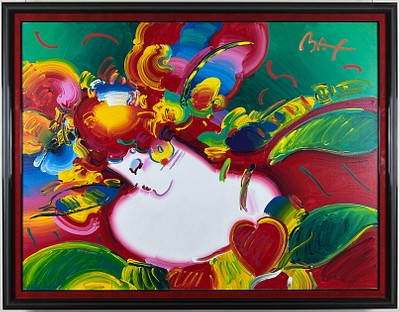Lewis Baltz "Untitled" Print.
Lot 94
Categories
Estimate:
$200 - $400
Absentee vs Live bid
Two ways to bid:
- Leave a max absentee bid and the platform will bid on your behalf up to your maximum bid during the live auction.
- Bid live during the auction and your bids will be submitted real-time to the auctioneer.
Bid Increments
| Price | Bid Increment |
|---|---|
| $0 | $5 |
| $100 | $10 |
| $200 | $20 |
| $1,000 | $50 |
| $5,000 | $100 |
| $10,000 | $200 |
About Auction
By Scottsdale Art Exchange
Jul 29, 2023
Set Reminder
2023-07-29 12:00:00
2023-07-29 12:00:00
America/New_York
Bidsquare
Bidsquare : Our Annual Midsummers Day Auction
https://www.bidsquare.com/auctions/scottsdale-art-exchange/our-annual-midsummers-day-auction-13196
This auction will feature 900 amazing items. The Auction will include 300 items for our fine art gallery and over 600 items from our consignment partners. Scottsdale Art Exchange sue@firerockfineart.com
This auction will feature 900 amazing items. The Auction will include 300 items for our fine art gallery and over 600 items from our consignment partners. Scottsdale Art Exchange sue@firerockfineart.com
- Lot Description
"Lewis Baltz was an American photographer and a key figure in the New Topographics movement. He was born on September 12, 1945, in Newport Beach, California, and passed away on November 22, 2014, in Paris, France. Baltz is renowned for his minimalist and highly detailed black-and-white photographs that explored the impact of human intervention on the urban landscape. His work focused on industrial sites, suburban developments, and the built environment, capturing the often stark and anonymous nature of these spaces. In the 1970s, Baltz gained recognition as part of the influential exhibition ""New Topographics: Photographs of a Man-Altered Landscape"" held at the George Eastman House in Rochester, New York. The exhibition, along with the accompanying catalog, marked a significant shift in the approach to landscape photography, emphasizing the banality and human-altered aspects of the environment. Baltz's photographs often depicted mundane and overlooked subjects, such as industrial buildings, parking lots, and tract houses. He utilized a cool and detached documentary style, employing straight-on perspectives, precise compositions, and formalist aesthetics. His images were devoid of human presence, emphasizing the impact of human activity on the environment. Throughout his career, Baltz produced numerous series of work, including ""The Tract Houses,"" ""Park City,"" and ""Candlestick Point."" His photographs were characterized by their critical examination of the rapid urban development, suburban sprawl, and the effects of capitalism and consumerism on the landscape. In addition to his photographic practice, Baltz was also a writer and taught photography at the California Institute of the Arts. His writings, often reflecting on the role of photography and its relationship to the contemporary world, have been compiled in books such as ""Texts"" and ""Lewis Baltz: Common Objects."" Lewis Baltz's work has been exhibited internationally, and he is recognized as a significant figure in the history of contemporary photography. His photographs continue to influence and inspire photographers interested in exploring the social, economic, and environmental aspects of the built environment.
Measures 8.51 x5.76
Printed circa 1980s
Verso is blank.
Mounted to archival quality paper."Good condition. No rips, tears, creases.Condition
- Payment & Auction Policies
-
Available payment options
-
-
- Buyer's Premium



 EUR
EUR CAD
CAD AUD
AUD GBP
GBP MXN
MXN HKD
HKD CNY
CNY MYR
MYR SEK
SEK SGD
SGD CHF
CHF THB
THB
























